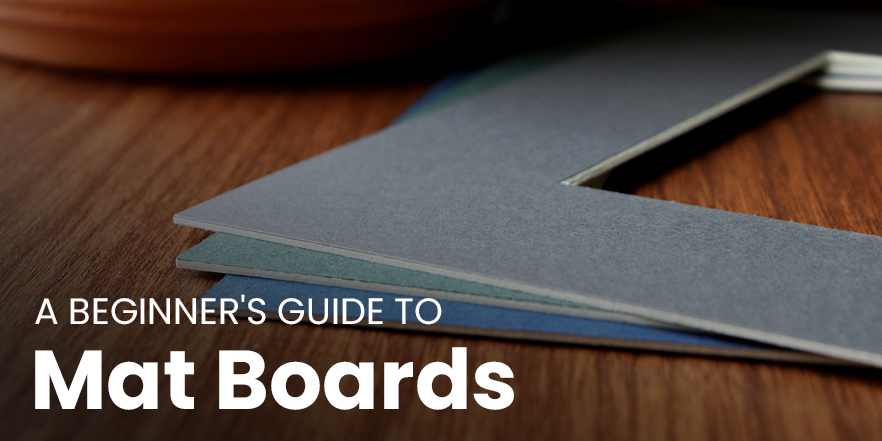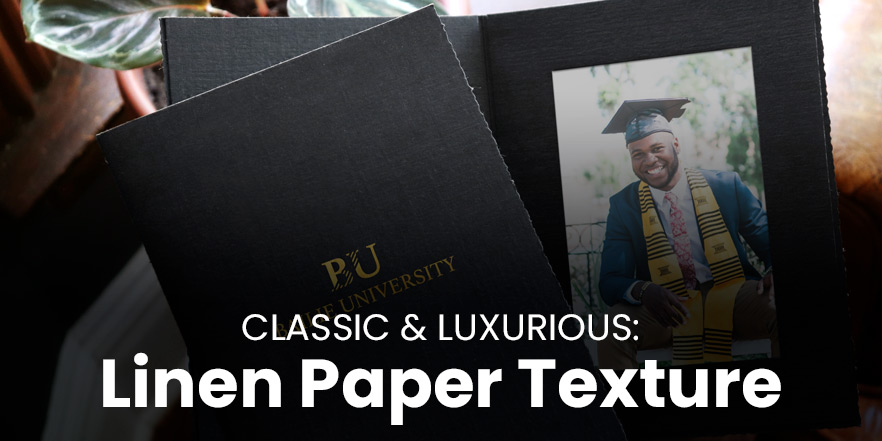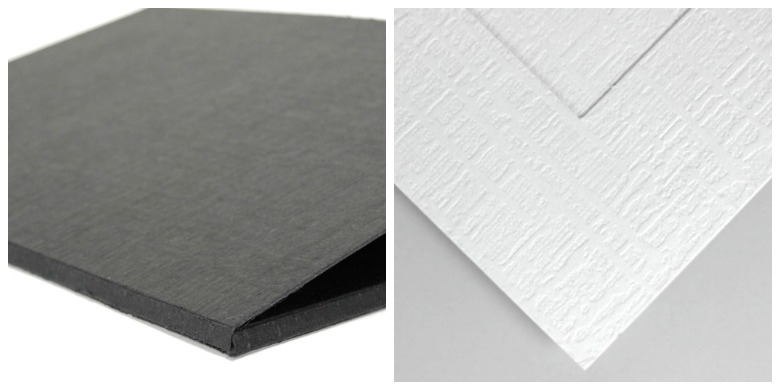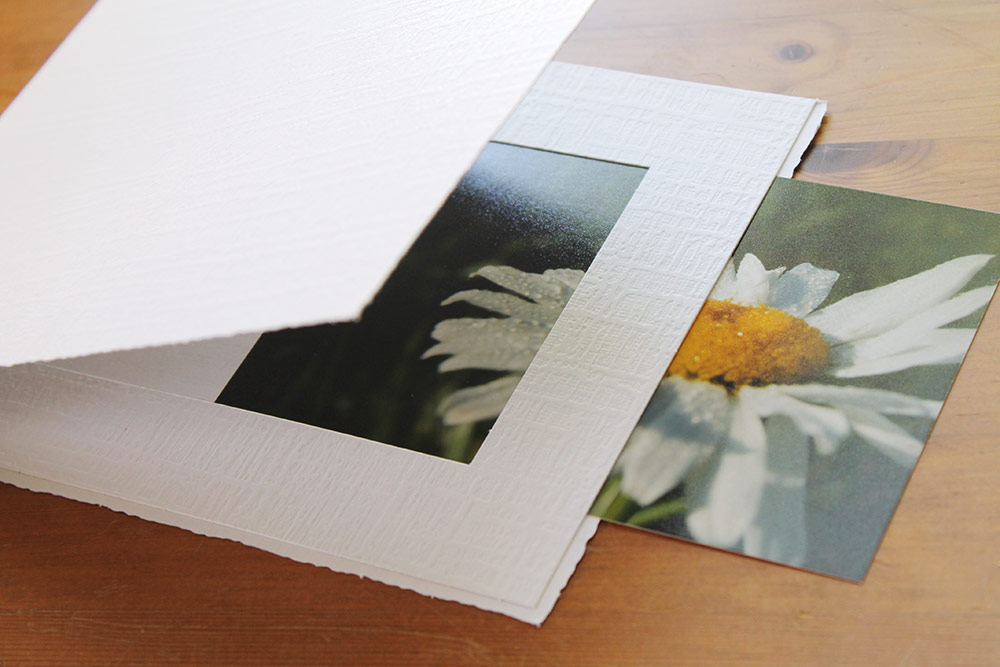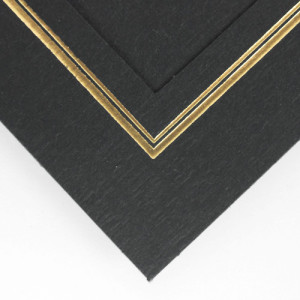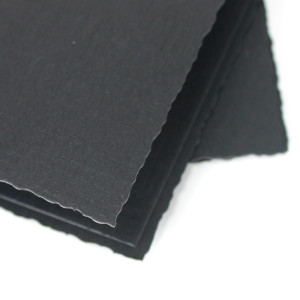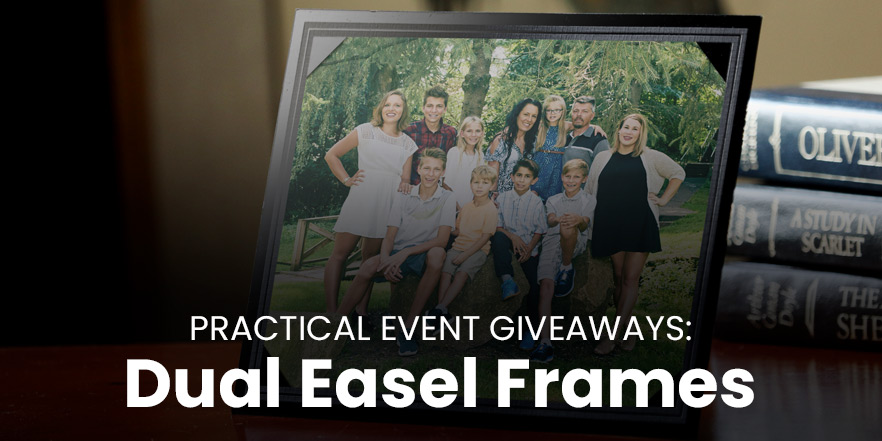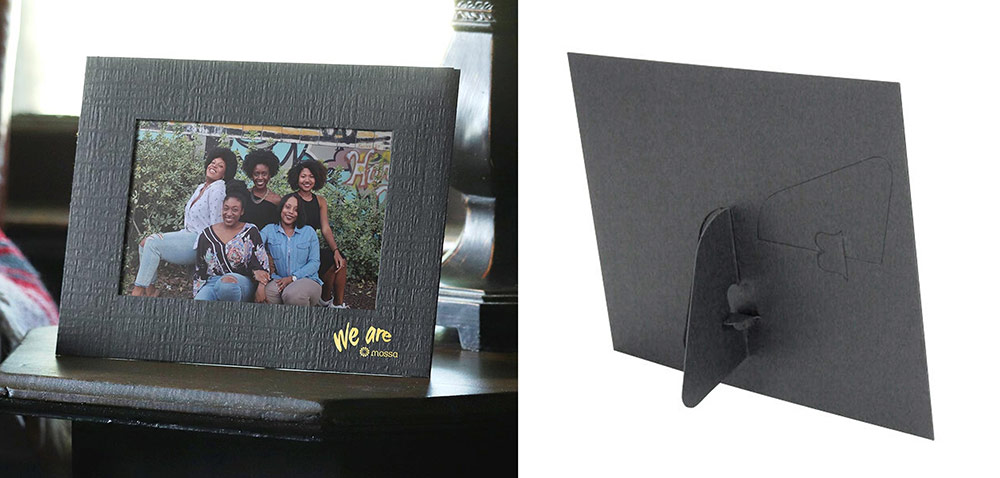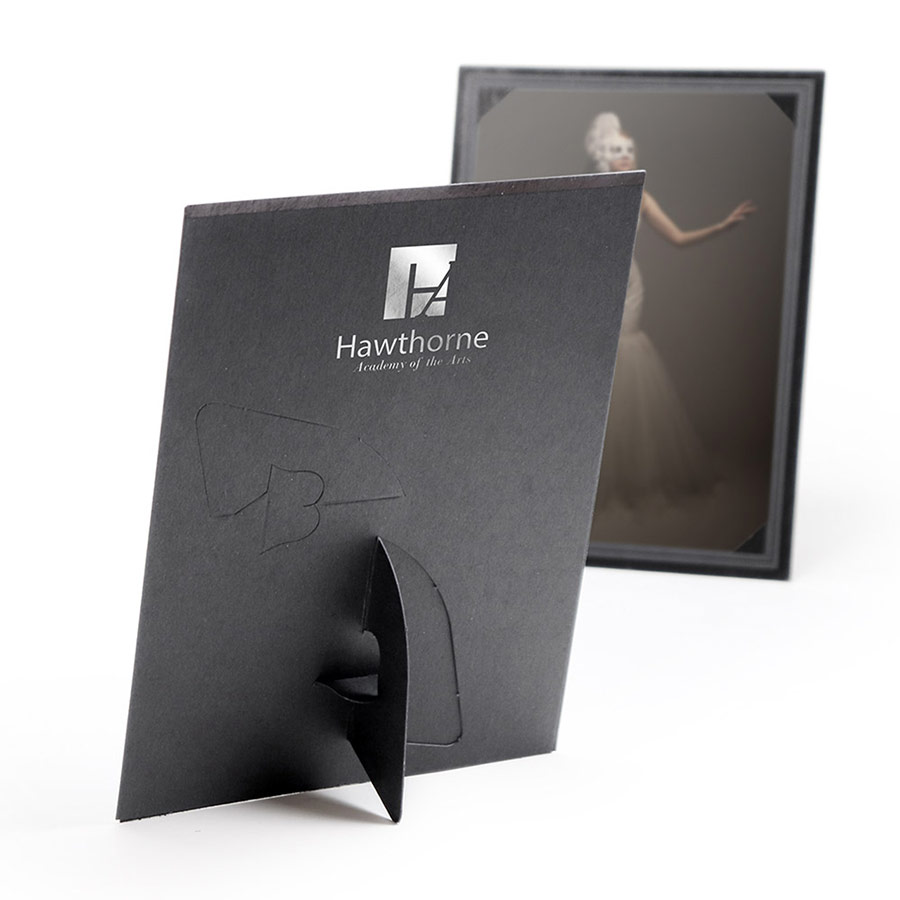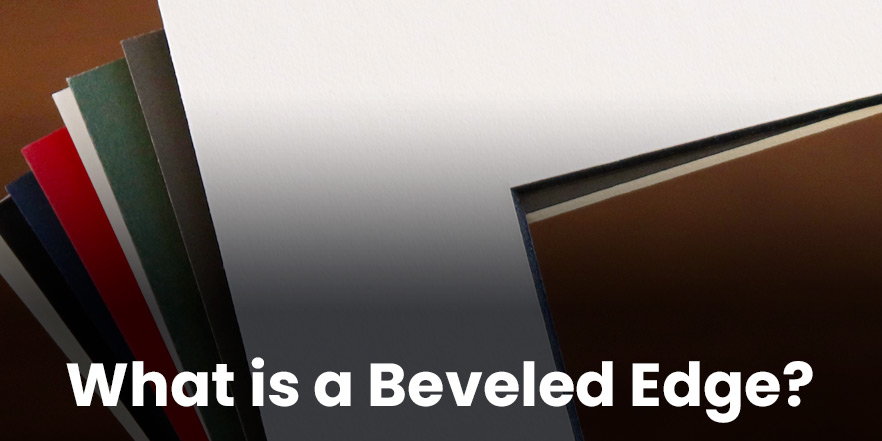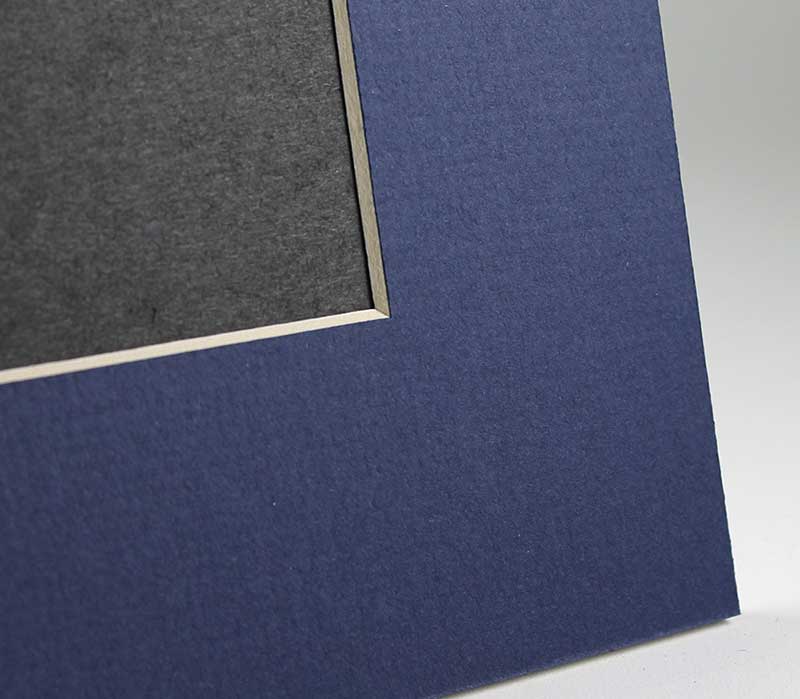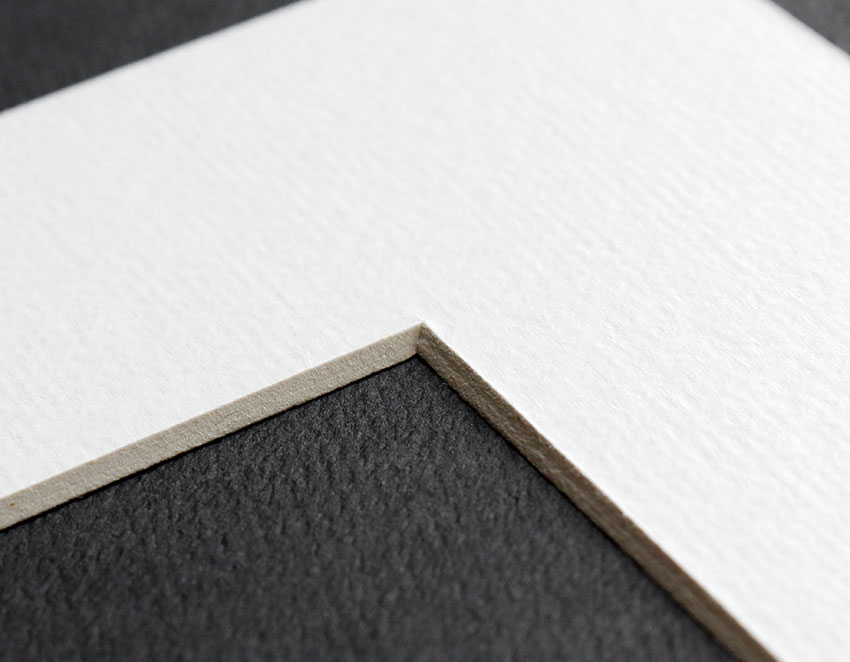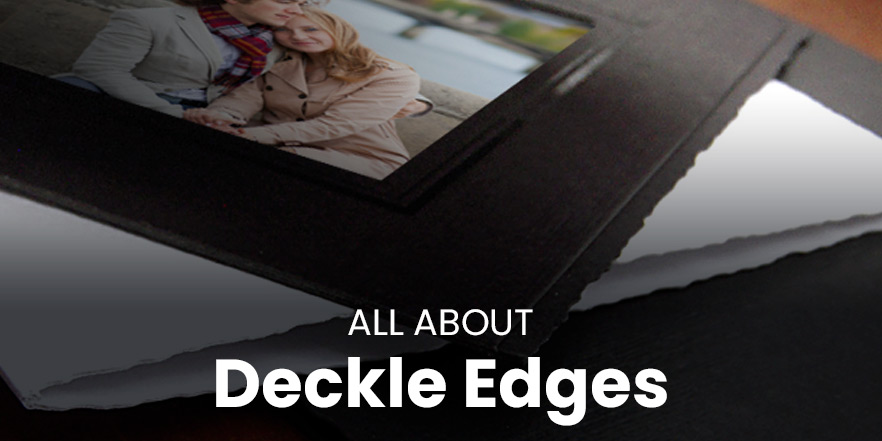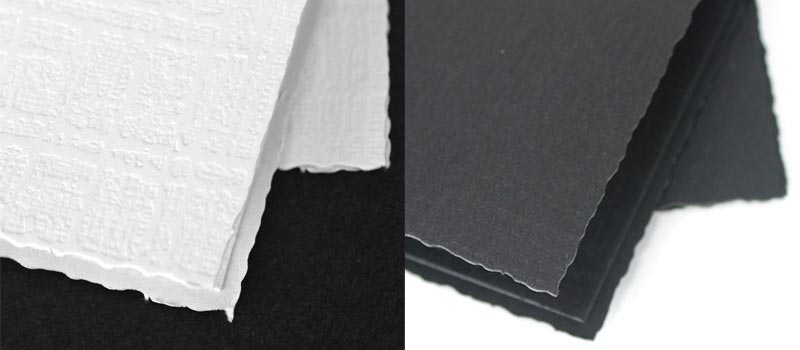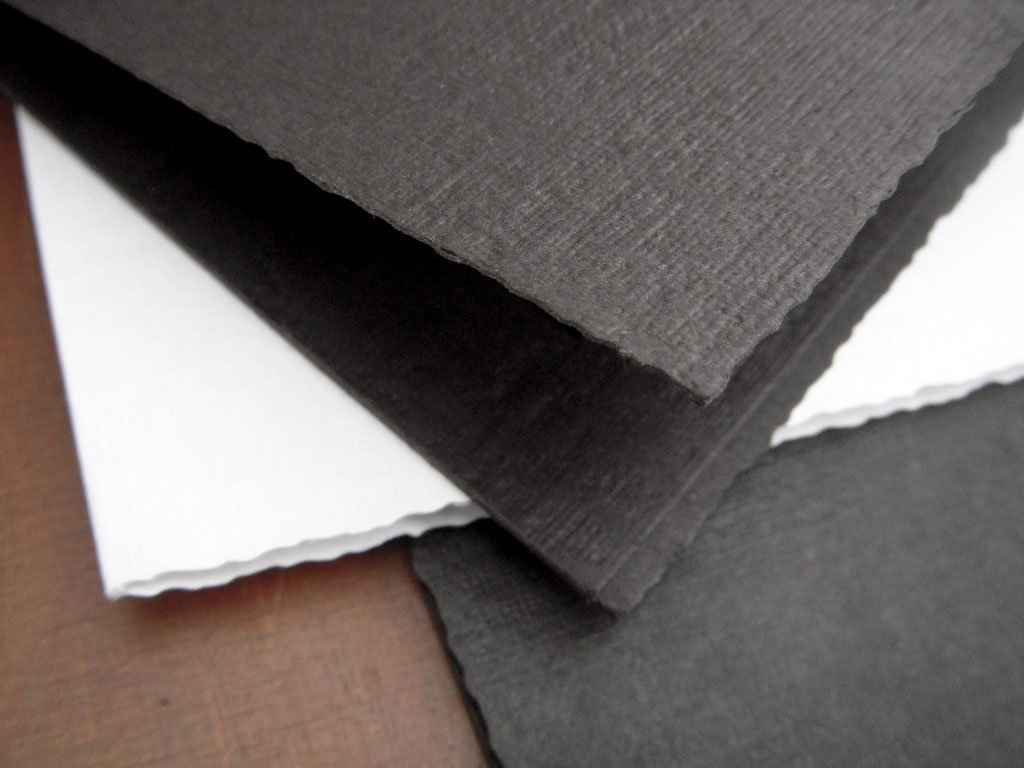What are mat boards?
A mat board is a thick layer of a cardboard-like material that is used to protect your photo or artwork in a frame. Mats are typically made from either pressed wood or cotton pulp.
The mat board material serves as a protective barrier between the glass or acrylic in a frame and the surface of your artwork/photograph.
For example, if moisture seeps into a frame and there’s no protective barrier (mat board), it can be disastrous. Over time, moisture can cause the artwork to stick to the glass or acrylic, which will eventually destroy the photograph or art piece. Having a mat board as a barrier protects your photo or artwork from the glass or acrylic.
But mats are not only used for protection of an art piece; they’re also a decorative border around your photo or art print. The mat breaks up the spatial continuity of a complete framed piece. It can be used to lead a viewer’s eye to the art/photograph by bordering it with negative space. It also gives the artwork a finished look.
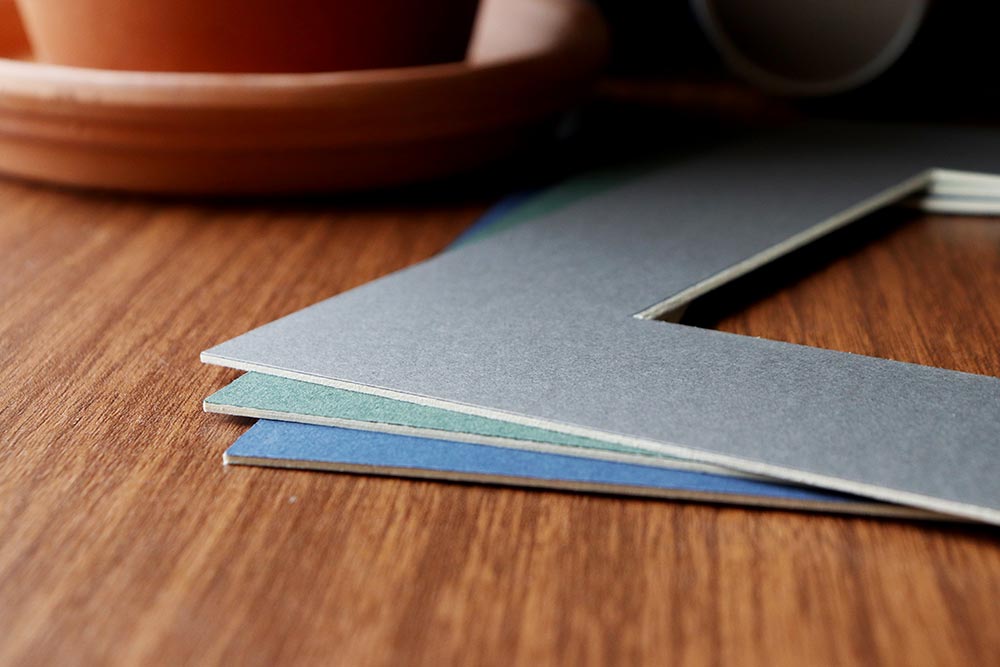
Is mat board acid free?
Not all mat boards are acid free—but many are. Mat board quality depends on the material it’s made from.
There are three classes of mat board: decorative, conservation, and archival. Both decorative and conservation mat boards are made of pressed wood pulp and are made to be either acid neutral or acid free.
- Decorative mat boards are acid neutral. The wood pulp is treated with calcium carbonate which neutralizes the acid and lignin that naturally occur in wood pulp.
- Conservation mat boards are made of wood pulp where the acid and lignin are removed from the material.
- Archival mat boards are usually made of cotton pulp which naturally does not contain either acid or lignin
Our mat boards are in the decorative class and are therefore acid neutralized (not acid free). They’re made out of wood pulp that’s treated to protect the board for degradation of the acid and lignin. So if you’re looking for a mat to protect your photos or art—but not necessarily preserve them for a lifetime—our framing mats will work great for you.
Is mat board the same as mount board?
No. Mat board serves as a layer between your photograph and the glass or acrylic cover. Mount board is for support under your photograph or artwork and serves as a stiff backing to assist in sturdiness.
How to frame with mat board?
First, determine the photo or print size you’re going to frame. That’s the inner size of your mat. Then, decide what size frame you want, and that’s the outer size.
For example, if your photo is 8″ x 10″, you’ll want a mat that is larger than that opening. An 11″ x 14″-sized mat board with an 8″ x 10″ would accommodate your photo beautifully.
Mat board size also depends on preference. How much negative (border) space do you want around your photo? Do you want a thick border or a thin border? Once you choose your image and mat board size then you’ll want to choose a frame that accommodates the size of the mat board’s outer edges.
Once you have your art or photo, the mat board, and frame then it’s time to assemble your finished piece!
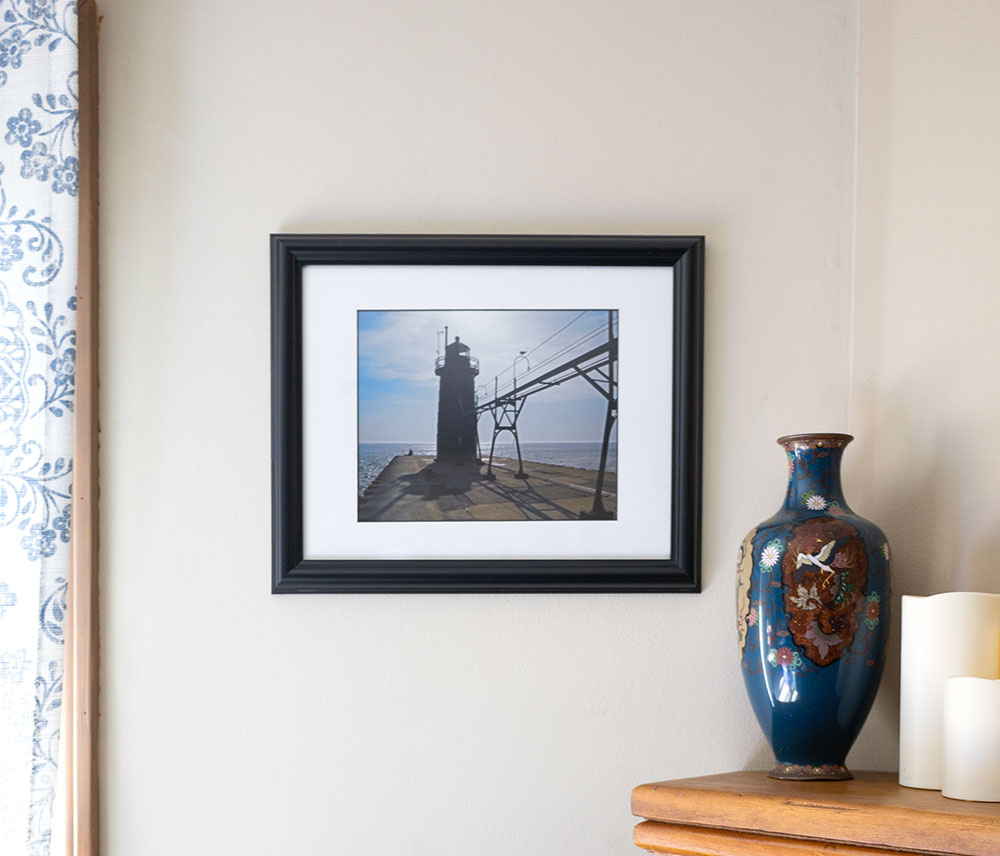
Is mat board recyclable?
Yes. Mat boards made out of wood or cotton pulp are recyclable.
Mat Board vs. Chipboard/Cardboard
Chipboard is a thinner board made of wood pulp and/or recycled products. It’s also sometimes known as paperboard. Chipboard varies in size and thickness and is sometimes used as a backer board for photographs and artwork.
Chipboard is normally not “acid free” or “acid neutral”. Sometimes the board is covered in acid free paper that will help protect your artwork. However, this type of product is not considered “museum” or “archival” quality.
Cardboard is often made of several layers, and it’s usually thicker and sturdier than chipboard. Cardboard can come in many forms. The most common type is corrugated cardboard (what’s used for to make shipping boxes), which is made of two layers of heavy paper called liners, with a middle layer of paper folded like an accordion. The accordion is glued to the two outer layers. Corrugated cardboard is not usually acid free. It can be covered with an acid free paper to protect artwork for a limited amount of time.
Mat board is made from either wood pulp or cotton pulp; cotton pulp provides the most long-term protection. Mats are often labeled as “acid free” when they are actually “acid neutral.” Since wood pulp naturally contains acid and lignin, a chemical is added to wood pulp boards to neutralize the acid. Cotton pulp is naturally acid- and lignin-free so these types of mat boards are used for archival purposes.
Standard Mat Board Dimensions
Standard mat board sizes are typically the same size as standard photograph sizes:
- 5″ x 7″
- 8″ x 10″
- 11″ x 14″
- 16″ x 20″
- 20″ x 24″
But mat boards are not constrained to these sizes. Professional framers and some mat board vendors can cut a mat board to a custom size. Need a custom-sized mat board? We sell mat boards cut to size.
What are some mat board uses?
Mat boards can be used to protect and display your:
- Artwork
- Photographs
- Certificates, Awards & Diplomas
- Posters
- Sports Memorabilia
Can text or logos be added to mat board?
Yes! You can personalize decorative mat boards. At Studio Style we can foil stamp text, logos, monograms, or even a special message on a mat board. Learn more about our personalized photo mats or give us a call at (800) 346-3063.
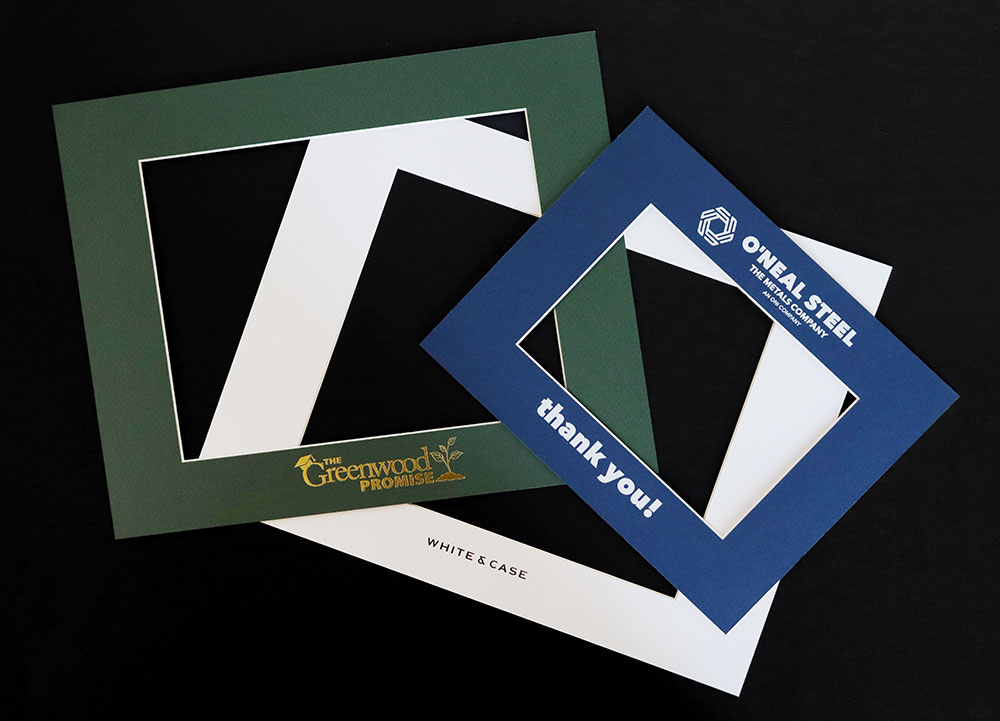
Leave a Comment
